Are your electric pickups struggling on unpaved roads? A standard setup can lead to a punishing ride, damaged cargo, and a vehicle that wears out far too quickly.
The best combination for rural use is a robust, customized leaf spring suspension paired with wider, deeper-tread tires. This setup provides the durability and load capacity needed for farm work while improving traction and stability on uneven surfaces.
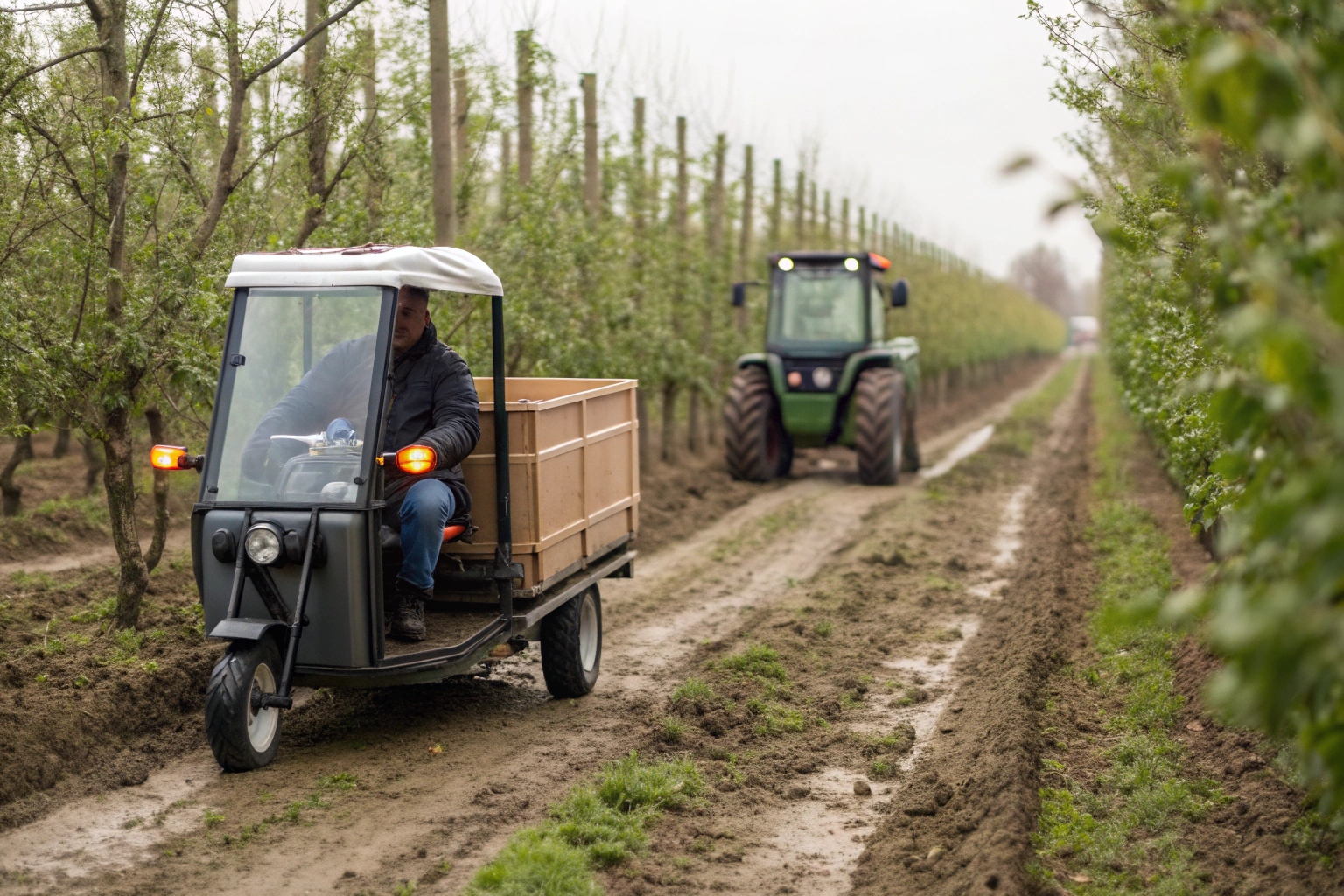
I once had a client from a mountainous region in Peru who was interested in complex hydraulic suspension for his fleet of farm trucks. He thought it would provide a better ride. I explained that for his application—hauling heavy sacks of potatoes on rough dirt tracks—the simplicity and brute strength of a well-configured leaf spring system would be far more reliable and easier to maintain. We equipped his trikes with an extra-plate leaf spring package and wider, all-terrain tires. He later told me it was the best decision he made, as his vehicles have had zero suspension failures.
What suspension types—leaf spring, hydraulic, or independent—perform best on uneven rural roads?
You see different suspension options mentioned, but you're unsure what's practical. Choosing the wrong type could mean constant breakdowns and a vehicle that isn't tough enough for the job.
For heavy-duty electric 3-wheel pickups, a multi-plate leaf spring suspension is the undisputed best choice. It is simple, incredibly strong, easy to repair, and specifically designed to handle heavy loads on rough terrain.
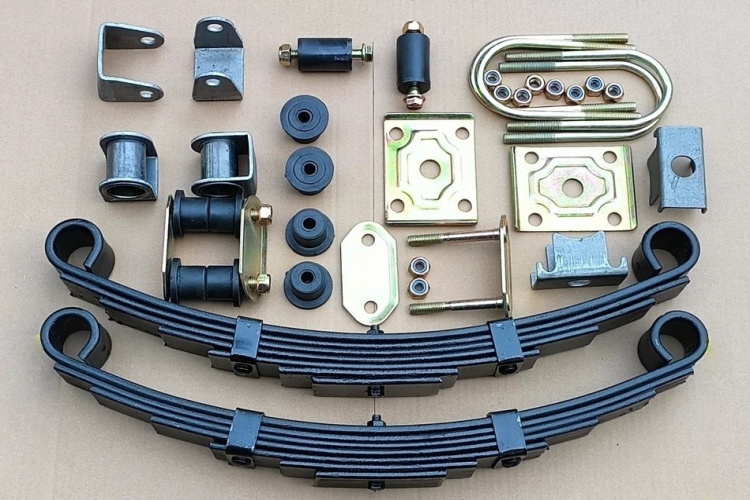
While you might hear about other systems, they are rarely used on these workhorse vehicles for good reasons. Hydraulic shocks are often used with leaf springs to dampen bounce, but not as the primary load-bearer. Independent suspension is too complex and not robust enough for the concentrated weight these vehicles carry. The leaf spring is king in this category. As a factory, we don't just offer one type; we customize it based on your needs. The magic is in the number of steel plates. More plates mean a higher ความสามารถในการรับน้ำหนัก, and we can match the setup to your exact requirements.
| Suspension Setup | Number of Leaf Plates | Recommended Max Load | กรณีใช้งานที่ดีที่สุด |
|---|---|---|---|
| Light Duty | 4 Plates | 300 KG | Transporting market goods, personal tools, lighter cargo. |
| Standard Duty | 5 Plates | 500 KG | General farm tasks, moving sacks of grain, village transport. |
| Heavy Duty | 6 Plates | 600 KG | Regular hauling of produce, animal feed, commercial goods. |
| Extra Heavy Duty | 7 Plates | 800 KG | Transporting building materials, water barrels, heavy loads. |
How do tire size and tread patterns affect traction, stability, and ride comfort on dirt or gravel surfaces?
Are your standard tires spinning in mud or feeling unstable on gravel? The wrong tires can make a powerful vehicle useless when the ground gets soft or slippery.
Wider tires provide better stability and prevent sinking into soft ground. A deeper, more aggressive tread pattern is essential for gripping dirt, mud, and gravel, giving you traction where standard road tires would fail.
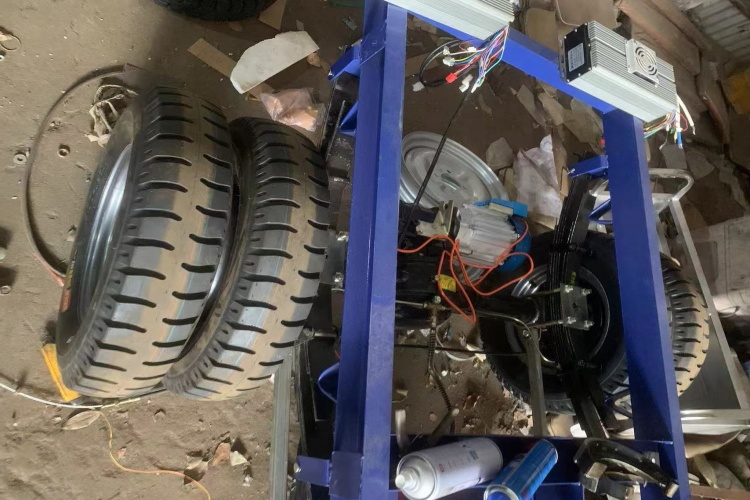
Think of tires as the vehicle's shoes. You wouldn't wear dress shoes to work on a farm, and the same logic applies here. Tire size matters: a wider tire spreads the vehicle's weight over a larger area, helping it "float" on top of sand or mud instead of digging in. The tread pattern is equally critical. The deep grooves and chunky blocks of an off-road or all-terrain tire act like teeth, biting into the loose surface to provide forward momentum. A standard road tire, with its shallow channels designed for water on pavement, will just spin uselessly in mud. Choosing the right tire is a low-cost decision that dramatically improves a vehicle's all-weather, all-terrain capability.
| Tire Type | Tread Description | ดีที่สุดสำหรับ |
|---|---|---|
| Standard Road | Shallow, circumferential grooves | Paved roads, very light-duty use |
| All-Terrain | Interlocking blocks, medium depth | Hard-packed dirt, gravel, mixed-use |
| Off-Road / Mud | Deep, widely spaced lugs | Mud, sand, soft soil, extreme conditions |
What’s the ideal balance between load capacity and suspension flexibility for farm or village transport needs?
You want to carry the heaviest load possible, but a super-stiff suspension can shake the vehicle and driver violently on bumpy roads when it's empty.
The ideal balance is a suspension rated for your typical maximum load, not a theoretical one. A setup that is too stiff for your daily needs will lead to a harsh ride and put unnecessary stress on the vehicle's frame.
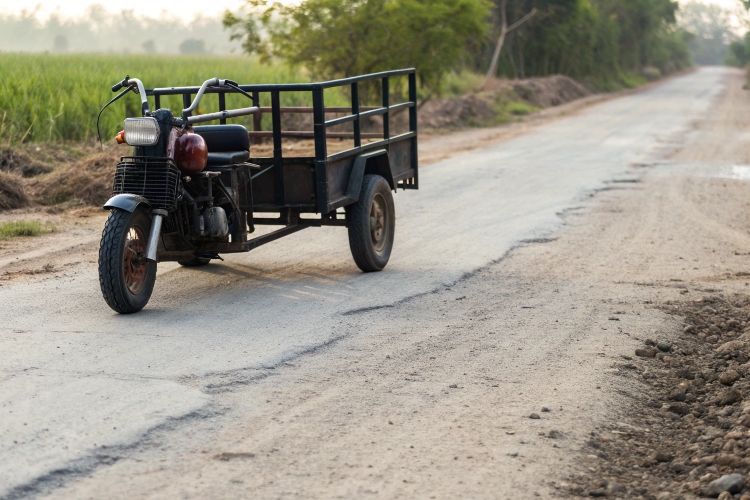
This is a common conversation we have with buyers. They say, "Give me the strongest suspension you have!" But it's important to consider the ride when the truck is empty. An "Extra Heavy Duty" 7-plate leaf spring setup is fantastic when carrying a full 800kg of cargo. But when empty, there's no weight to compress the springs, so the ride becomes incredibly rigid and bouncy. Every bump in the road is transferred directly to the chassis and the driver. This is not only uncomfortable but also bad for the vehicle over time. The best strategy is to be realistic about your needs. If you carry 500kg every day and 700kg once a month, choose the "Heavy Duty" 6-plate option. It will handle your daily work perfectly and can manage the occasional overload without being punishingly stiff the rest of the time.
How can buyers choose the right combination of tires and suspension to extend vehicle life and reduce maintenance costs?
You want to make a smart, long-term investment. Choosing the wrong components leads to premature frame cracks, frequent tire replacements, and costly downtime.
To maximize vehicle life, treat the suspension and tires as a single system. Match a heavy-duty leaf spring package with wider, all-terrain tires. This combination properly absorbs shocks, protecting the frame and powertrain from damaging impacts.
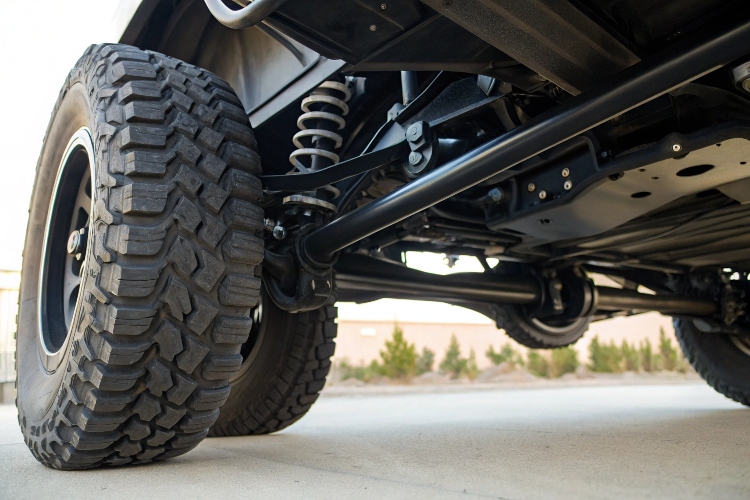
Think of it this way: the tires are the first line of defense against rough roads. They absorb the small, high-frequency vibrations. The suspension is the second line of defense, handling the big bumps and heavy impacts. If your tires are too narrow or overinflated, they can't do their job, and every small shock is sent straight to the suspension and frame. Over time, this constant rattling causes fatigue in the metal and leads to cracks. By investing in the right combination upfront, you create a system where each component protects the others. A wider tire provides a bit of cushion, and the robust leaf springs manage the load. This synergy means fewer repairs, a longer-lasting vehicle, and a much lower ต้นทุนการเป็นเจ้าของทั้งหมด. The best choice is always to tell your supplier exactly what terrain and loads you expect, so we can configure the perfect match for you.
บทสรุป
For rural use, a custom leaf spring suspension and proper off-road tires are not optional upgrades. They are essential components for durability, safety, and a profitable, long-lasting vehicle.

